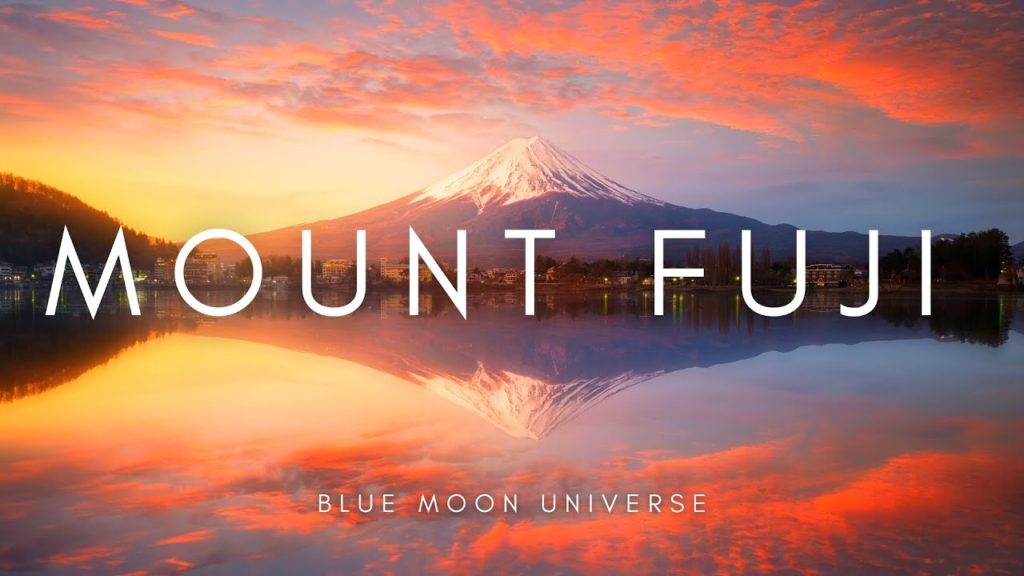Mount Fuji, Japanese Fuji-san, also spelled Fujisan, also called Fujiyama or Fuji no Yama, highest mountain in Japan. It rises to 12,388 feet (3,776 metres) near the Pacific Ocean coast in Yamanashi and Shizuoka ken (prefectures) of central Honshu, about 60 miles (100 km) west of the Tokyo-Yokohama metropolitan area. It is a volcano that has been dormant since its last eruption, in 1707, but is still generally classified as active by geologists. The mountain is the major feature of Fuji-Hakone-Izu National Park (1936), and it is at the centre of a UNESCO World Heritage site designated in 2013.The origin of the mountain’s name is uncertain. It first appears as Fuji no Yama in Hitachi no kuni fudoki (713 CE), an early government record. Among the several theories about the source of the name is that it is derived from an Ainu term meaning “fire,” coupled with san, the Japanese word for “mountain.” The Chinese ideograms (kanji) now used to write Fuji connote more of a sense of good fortune or well being.Mount Fuji, with its graceful conical form, has become famous throughout the world and is considered the sacred symbol of Japan. Among Japanese there is a sense of personal identification with the mountain, and each summer thousands of Japanese climb to the shrine on its peak. Its image has been reproduced countless times in Japanese art, perhaps no more famously than in the series of woodblock prints Thirty-six Views of Mount Fuji by Hokusai, which were originally published between 1826 and 1833.According to tradition, the volcano was formed in 286 BCE by an earthquake. The truth is somewhat more complex. The age of Fuji is disputed, but it seems to have formed during the past 2.6 million years on a base dating from up to 65 million years ago; the first eruptions and the first peaks probably occurred some 600,000 years ago. The present-day mountain is a composite of three successive volcanoes: at the bottom is Komitake, which was surmounted by Ko Fuji (“Old Fuji”) and, finally, by the most recent, Shin Fuji (“New Fuji”). Over the millennia, the lava and other ejecta from Ko Fuji covered most of Komitake, although the top of the latter’s cone continued to protrude from the slope of Ko Fuji. Shin Fuji probably first became active about 10,000 years ago and has continued ever since to smolder or erupt occasionally. In the process it has filled in the slopes of its two predecessors and added the summit zone, producing the mountain’s now nearly perfect tapered form. The mountain is part of the Fuji Volcanic Zone, a volcanic chain that extends northward from the Mariana Islands and the Izu Islands through Izu Peninsula to northern Honshu.
—————————————-
🏷️ Tags:
mount fuji,fuji,mt fuji,mount fuji (mountain),mt. fuji,mount fuji japan,mount fuji travel guide,mount fuji documentary,things to do around mount fuji,mount fuji new,mount fuji art,mount fuji lake,mount fuji nora,mount fuji song,mount fuji trip,climb mount fuji,tokyo mount fuji,visit mount fuji,mount fuji facts,mount fuji unesco,mount fuji travel,mount fuji day tour,3 days in mount fuji,where is mount fuji,mount fuji trekking,visiting mount fuji,mount fuji japan map,mount fuji painting
—————————————-
📷 Thumbnail credit:
—————————————-
🎧 Music credit:
Hiraeth by Scott Buckley
Creative Commons — Attribution 3.0 Unported — CC BY 3.0
Free Download / Stream:
Music promoted by Audio Library
—————————————-
🎥 Playlist
▶ Space :
▶ Iceland :
▶ Ultimate Travel :
▶ Vintage :
▶ India :
▶ Tour :
—————————————-
⚙ Tools And Software I Use
▶ Wondershare Filmora X
▶ Adobe Premiere Pro
▶ DeOldify For Vintage Videos
▶ Esrgan For Upscaling
—————————————-
Copyright Disclaimer
▶ All The Footage Used In The Video Is Licensed
▶ I Use Paid,Free And Filmed Footage In My Channel
▶ Paid Footage from Getty images,Artgrid.io,Istock,Story Blocks
▶ Free Footage from Pexels ,Pixbay etc
▶ I Use Music From Audiolibrary,NCS etc
▶ I Use Thumbnails From Getty,Istock,Canva,500px etc
—————————————-
Social media
▶ Youtube:
▶ Instagram:


AloJapan.com